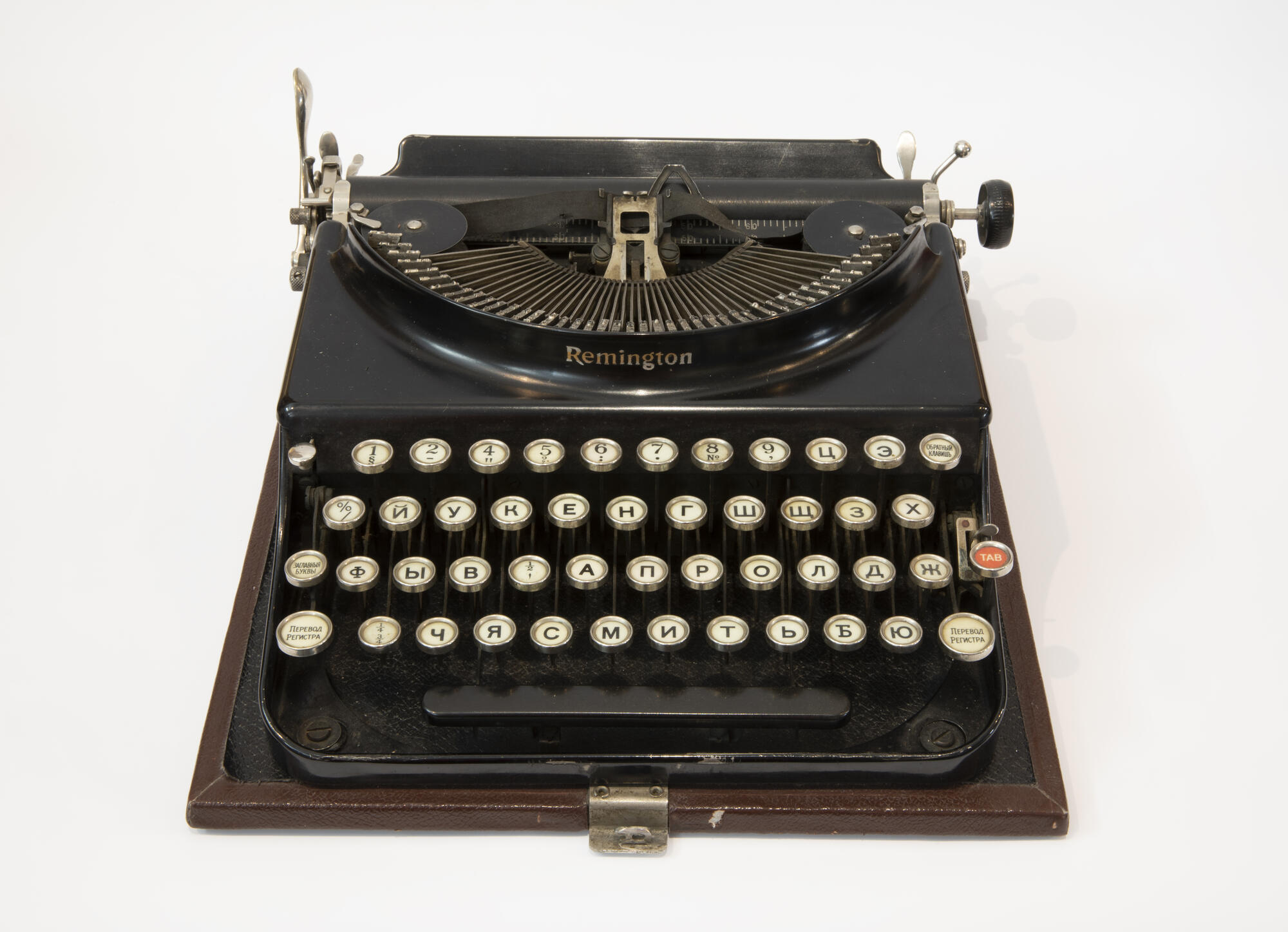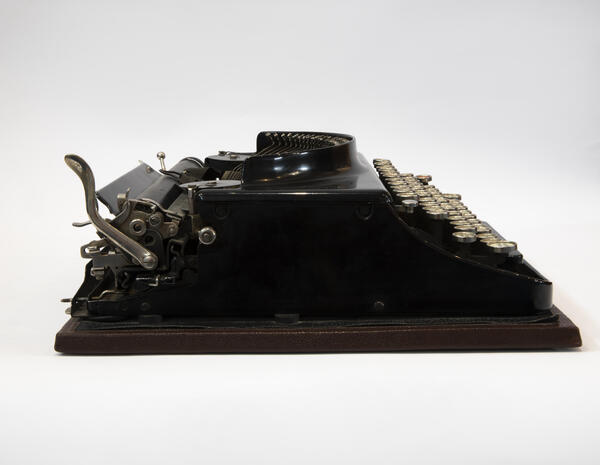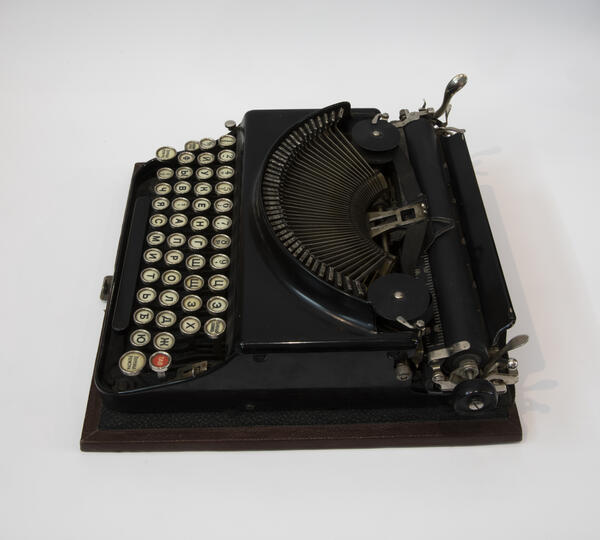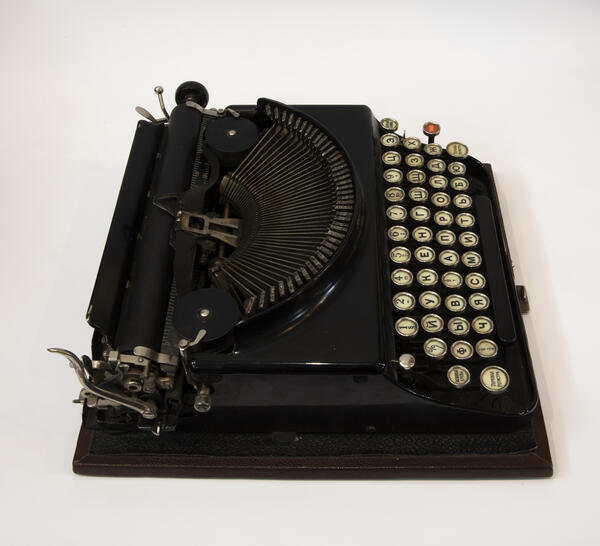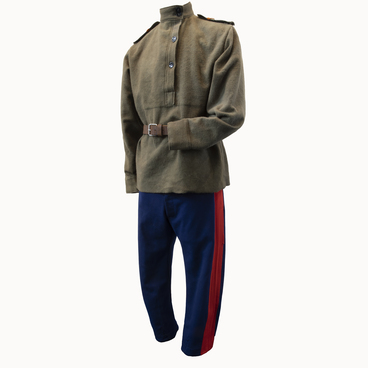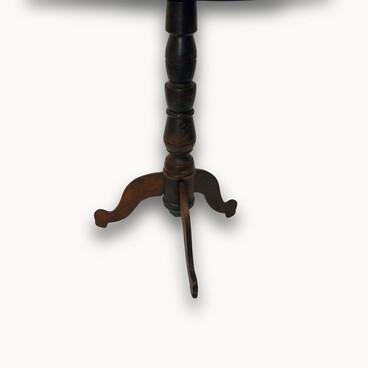Mikhail Sholokhov purchased a Remington typewriter based on the design by Sholes and Glidden in the late 1920s. The writer bought it on the remuneration for his book “Tales from the Don”. Mikhail and his wife Maria were excited about this purchase. Together, they learned to use the device and typed Sholokhov’s manuscripts, including many chapters of his novel “And Quiet Flows the Don”.
The typewriter consists of two main parts: the body and the carriage moving within the body. The keyboard contains 48 keys in four rows. It also includes additional “dead” keys, including “switch the case”, “backspace”, “tab”, “uppercase”, and one without any inscriptions. The housing is painted with black lacquer, and the base is draped with an enameled cloth. The brand name “Remington” is written in relief metal letters in the center. All keys are painted white except for the red “tab” key.
This typewriter was invented in the United States. In 1867, two American printers Christopher Latham Sholes and Samuel Soulé developed a number printing machine that could be used to print page numbers in books. Later, they decided to adapt it to printing alphabetical characters and produced a machine that could print one letter. Several months later, they designed a prototype of a machine for printing numerous letters. The typewriter was of such high quality that it allowed typing in a fast and clear manner. However, it was still somewhat impractical because it had a flat piano-like keyboard and could only print upper-case letters.
After that, Soule lost interest in the invention, but Sholes continued their work. In the following five years, he produced about 30 models of typewriters with each one being better than the previous model but still far from perfection. The first sufficiently reliable and convenient typewriter was presented only in 1873. Sholes demonstrated it to the famous Remington factory that produced firearms, sewing machines, and agricultural equipment.
In 1874, the first one hundred typewriters entered the market, with mass production launched only two years later. Even though the first Remington typewriters had the same operating principle as their modern counterparts, they differed in that the text was printed under the platen, and the operator could not see what was being typed. In order to see the printed text, it was necessary to raise the carriage from its hinges.
In 1908, Remington started producing “visible” front-strike typewriters.
The typewriter consists of two main parts: the body and the carriage moving within the body. The keyboard contains 48 keys in four rows. It also includes additional “dead” keys, including “switch the case”, “backspace”, “tab”, “uppercase”, and one without any inscriptions. The housing is painted with black lacquer, and the base is draped with an enameled cloth. The brand name “Remington” is written in relief metal letters in the center. All keys are painted white except for the red “tab” key.
This typewriter was invented in the United States. In 1867, two American printers Christopher Latham Sholes and Samuel Soulé developed a number printing machine that could be used to print page numbers in books. Later, they decided to adapt it to printing alphabetical characters and produced a machine that could print one letter. Several months later, they designed a prototype of a machine for printing numerous letters. The typewriter was of such high quality that it allowed typing in a fast and clear manner. However, it was still somewhat impractical because it had a flat piano-like keyboard and could only print upper-case letters.
After that, Soule lost interest in the invention, but Sholes continued their work. In the following five years, he produced about 30 models of typewriters with each one being better than the previous model but still far from perfection. The first sufficiently reliable and convenient typewriter was presented only in 1873. Sholes demonstrated it to the famous Remington factory that produced firearms, sewing machines, and agricultural equipment.
In 1874, the first one hundred typewriters entered the market, with mass production launched only two years later. Even though the first Remington typewriters had the same operating principle as their modern counterparts, they differed in that the text was printed under the platen, and the operator could not see what was being typed. In order to see the printed text, it was necessary to raise the carriage from its hinges.
In 1908, Remington started producing “visible” front-strike typewriters.
